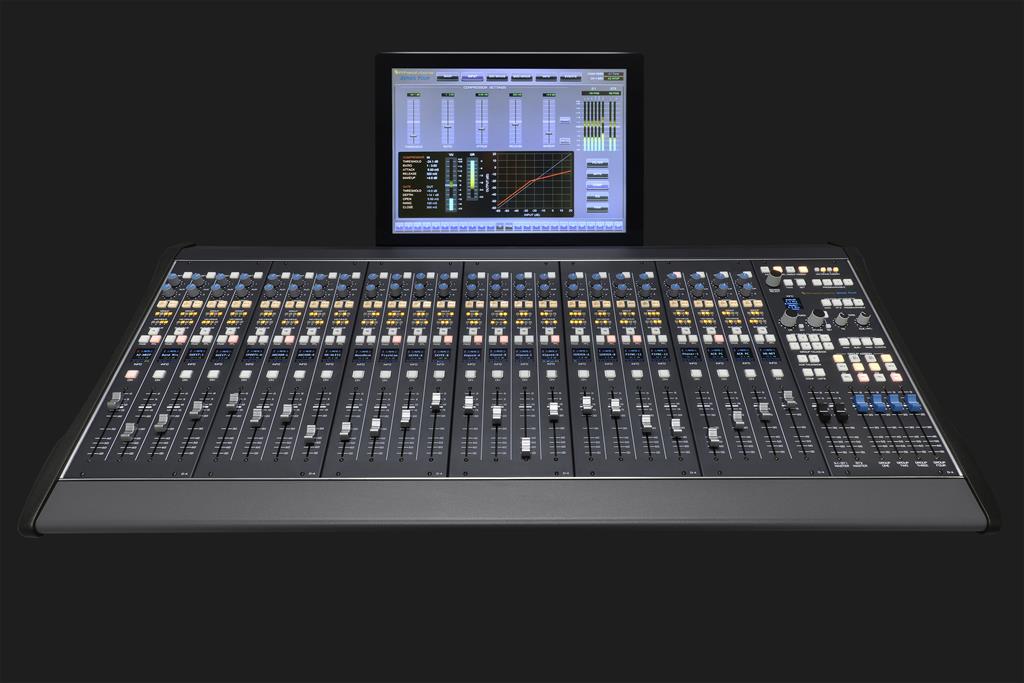Wheatstone Aims to Fill ‘Audio’ Gap in Automation

Wheatstone Series 4 audio console
NEW BERN, N.C.—With one eye on the ailing economy and the other on the growing adoption of production automation, Wheatstone arrives at the NAB Show with a new television audio console that slots in at the lower end of its price range. Derived from another of Wheatstone’s Bridge TDM-based TV audio desks, the D-8, the new Series 4 is intended to plug a gap in the market that, in certain cases, may be filled with consoles better suited to semi-pro recording or sound reinforcement applications.
“As you get into an automated environment your demands on the audio board are reduced,” said Phil Owens, eastern U.S. sales for Wheatstone Corp. “So much so that, in some cases, stations will go to full automation and not even have an audio board.
“But there are many folks who don’t want to use that model and would prefer to have a board there. In a situation like that you want a console system that will communicate with automation for those unattended dayparts, but that is a real broadcast board for when you have a live board operator on hand.”
The alternative consoles installed by some facilities often have limitations, and not only represent a functional compromise but may also be too complicated to operate in a broadcast environment. “There’s a lot of multitasking on the surface, menus to wade through, and a lot of knobs that could be, let’s say, mishandled,” said Owens.
ESSENTIAL FEATURES
Those consoles also typically lack features that are essential in broadcast production. “One is any kind of real machine control, with GPI closures for remote starts and stops, remote microphone control, and things like that. Studio muting is usually missing on a board like that. Programmable delay for lip sync correction is usually missing.”
With those factors in mind, said Owens, Wheatstone decided to introduce a desk to address that market segment. “So we took our D-8 console and made some mods to it to get the price down. They’re not really deep cuts to the system; functionally, it still does everything a fully-fledged D-8 does. But it’s at a substantially reduced price point.”
Directly addressing the intended market, the Series 4 incorporates Wheatstone’s Automation Control Interface (ACI). When integrated with the plant’s production automation system, ACI enables automated routing changes or automatic crossfading between audio inputs as video sources cut or dissolve, to offer two examples. The new console also includes broadcast-specific functionality such as automatic studio muting, machine control logic, and a tally system.
Wheatstone’s Gibraltar mix engine supports 1,024 DSP signal paths. Every input channel features four-band parametric EQ, tunable high- and low-pass filters, dynamics processing such as compressor/limiter and expander/gate, and programmable delay for lip sync correction.
Similarly to Wheatstone’s other TV consoles, the Series 4 is networked through the Bridge TDM system. Resources shared across the network and brought into the Series 4 may be mono, stereo, or 5.1. Like the D-8, the Series 4 incorporates two main program buses, a 5.1 plus a stereo, plus two auxiliary sends.
“Every TV surface from Wheatstone does both stereo and 5.1, and will do upmixing from stereo to 5.1 and downmixing from 5.1 to stereo,” said Owens.
The Series 4 also addresses a shortcoming of those alternative desk choices: the configuration of mix-minus buses for IFB feeds. “With those boards you have to build your mix-minuses using aux sends,” noted Owens.
A console can have a reasonable number of aux sends, and even matrix sends, but the controls may be buried below the main menu: “The issue there is how hard is it to configure and change, especially if you have to change it on the fly.”
In contrast, the Series 4 offers a direct bus-minus feed from each of its 48 input fader channels. There are also four assignable mix-minus buses, for a grand total of 52.
ENHANCED DIMENSION
Wheatstone will introduce other new features at this year’s NAB Show. New for the Dimension Two console is audio file playout. “You can just load up a USB thumb drive with audio files and play them directly from the system; assign it to a fader and play it out,” said Owens.
The company has also introduced layering. “The distinction is that pretty much all of our previous TV boards used paging that really was like two layers—a page A and a page B,” said Owens. “But the faders were still married to DSP channels. We’ve moved away from that to what you could call a European approach, where you can create up to eight separate layers. The faders can be flexibly assigned to the DSP channels, so that you have a lot more flexibility when you’re creating user layouts and snapshots.”
Wheatstone will be in booth C3112 in the Central Hall of the LVCC.
The professional video industry's #1 source for news, trends and product and tech information. Sign up below.
Steve Harvey began writing for Pro Sound News and Surround Professional in 2000 and is currently senior content producer for Mix and a contributor to TV Tech. He has worked in the pro audio industry—as a touring musician, in live production, installed sound, and equipment sales and marketing—since November 1980.
